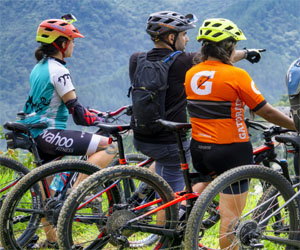


Your Path To Slope Success
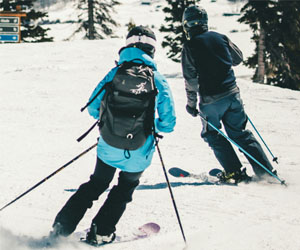
Skiing is an exhilarating winter sport that offers the perfect combination of adventure, physical activity, and the beauty of snowy mountains. For novices taking their first tentative turns on the slopes, skiing can seem intimidating, but with the right guidance and a positive attitude, it can become an enjoyable and rewarding experience. In this article, we'll provide essential skiing tips to help novices make their way down the slopes with confidence.
1. Take Lessons From A Certified Instructor: One of the most crucial steps for novice skiers is to take lessons from a certified ski instructor. They can teach you the proper techniques, help you build a solid foundation, and ensure your safety on the slopes. Beginner lessons will focus on basic skills like balance, turning, and stopping.
2. Wear Appropriate Clothing: Dress warmly and in layers to stay comfortable on the slopes. Wear moisture-wicking base layers to keep sweat away from your skin, insulating layers to trap warmth, and a waterproof and insulated ski jacket and pants to protect against the cold and snow.
3. Choose The Right Equipment: Renting skiing equipment is a practical option for novices, as it allows you to try different gear without a significant investment. Make sure your boots are well-fitted, and your skis are suited to your skill level. Ski shops and rental centers can provide expert advice.
4. Master The Snowplow (Pizza) Technique: The snowplow, often called the "pizza" technique, is the foundation for beginner skiers. To snowplow, point the tips of your skis inward, creating a wedge shape. This position slows you down and helps you control your speed. As you progress, you can start making parallel turns.
5. Learn To Turn And Stop: Turning and stopping are fundamental skiing skills. Practice turning your skis by shifting your weight from side to side, and learn to stop by bringing your skis together and applying pressure to the inside edges. These skills will give you control and confidence on the slopes.
6. Practice On Gentle Slopes: Start on gentle, beginner-friendly slopes to build your skills and confidence. Green slopes are perfect for novice skiers. As you become more comfortable, you can progress to more challenging terrain.
7. Use Proper Body Position: Maintain a balanced and centered body position with your knees slightly bent. Keep your weight forward to engage the edges of your skis and improve your control. Avoid leaning too far back, as it can lead to loss of control.
8. Be Aware Of Ski Etiquette: Understanding and following ski etiquette is essential for safety and a positive experience on the slopes. Yield to downhill skiers, stay in control, and be mindful of other skiers. Always look uphill before merging onto a slope.
9. Stay Positive And Patient: Skiing is a skill that takes time to develop. Be patient with yourself, and don't be discouraged by falls or challenges. Maintain a positive attitude and focus on your progress.
10. Relax And Enjoy The Experience: Finally, remember that skiing is not just about technique; it's also about enjoying the beautiful mountain scenery and the feeling of gliding on snow. Relax, breathe, and take in the winter wonderland around you.
As a novice skier, embracing these skiing tips will help you get off to a great start on the slopes. Remember that skiing is not just a sport but a memorable winter adventure waiting to be explored. With practice and perseverance, you'll soon be confidently navigating the slopes and experiencing the joy of skiing with grace and style.


A Phenomenon On The Rise
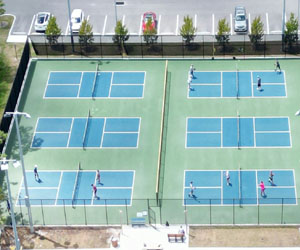 Community Building: Pickleball is more than just a game; it's a social activity that promotes interaction and community building. Local pickleball clubs, groups, and leagues have sprouted up in communities across the globe. These groups provide a platform for socialization, camaraderie, and support. Pickleball players often forge lasting friendships on the courts, both indoors and outdoors.
Community Building: Pickleball is more than just a game; it's a social activity that promotes interaction and community building. Local pickleball clubs, groups, and leagues have sprouted up in communities across the globe. These groups provide a platform for socialization, camaraderie, and support. Pickleball players often forge lasting friendships on the courts, both indoors and outdoors.
Intergenerational Play: Pickleball's cultural impact extends to intergenerational play. It's a sport where grandparents can compete alongside their grandchildren, fostering connections between different age groups. This inclusivity across generations strengthens family bonds and community ties, making it a unique cultural phenomenon.
Economic Boost: The growing popularity of pickleball has led to an economic boost in areas where the sport is thriving. This includes the construction and maintenance of pickleball courts, the sale of paddles and equipment, and hosting tournaments and events. Local businesses, from restaurants to sporting goods stores, often benefit from the influx of players and spectators.
Tournaments And Events: The competitive side of pickleball is a significant driver of its cultural impact.
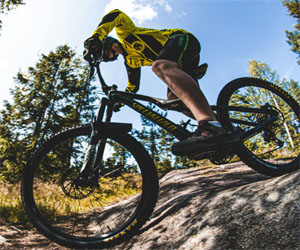
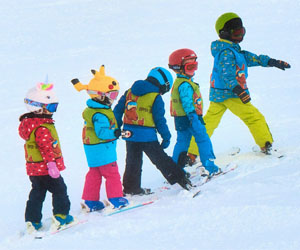


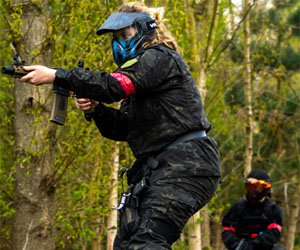
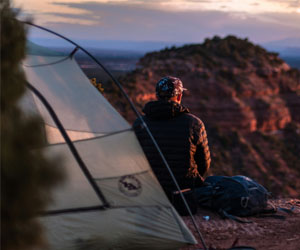
A Natural Connection
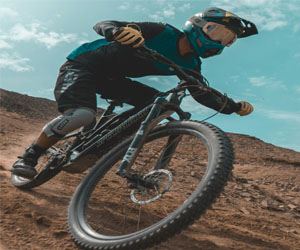 Mountain bikers have a unique advantage when it comes to exploring the outdoors. Unlike many other outdoor activities, biking allows riders to cover substantial distances, making it possible to reach less-accessible areas. These hidden gems often remain untouched by hikers or other outdoor enthusiasts. For those who want to escape the hustle and bustle of city life, mountain biking provides an avenue to explore untouched natural landscapes that offer solitude and a profound connection with the environment.
Mountain bikers have a unique advantage when it comes to exploring the outdoors. Unlike many other outdoor activities, biking allows riders to cover substantial distances, making it possible to reach less-accessible areas. These hidden gems often remain untouched by hikers or other outdoor enthusiasts. For those who want to escape the hustle and bustle of city life, mountain biking provides an avenue to explore untouched natural landscapes that offer solitude and a profound connection with the environment.
The outdoor connection extends to the myriad of environments that mountain bikers can explore. From lush, green forests to arid, rocky deserts, the diversity of terrains is astounding. This variety ensures that there's something for every rider, from those who seek the serenity of the woods to those who crave the challenges of technical rocky trails.
Furthermore, mountain biking fosters an environmentally conscious approach to outdoor exploration. Riders understand the importance of preserving the natural environment and following the principles of "leave no trace." They avoid disturbing wildlife, refrain from littering, and respect trail rules and guidelines. This responsible approach ensures that the beauty of the outdoors remains intact for future generations.
The sense of adventure and camaraderie among mountain bikers further enhances the experience of embracing the outdoors. Riding with friends or joining group rides allows riders to share the thrill and magnificence of the ride with others who appreciate the same beauty.
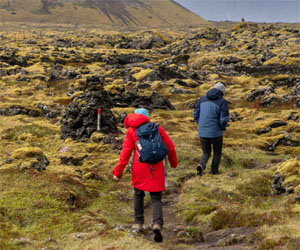 Understanding The Basics: Mastering the art of outdoor adventure begins with understanding the fundamentals. Start by learning essential outdoor skills, such as navigation, first aid, and wilderness survival. These skills are your foundation, providing the knowledge and confidence you need to thrive in the great outdoors. Take courses or workshops, read books, and practice these skills until they become second nature.
Understanding The Basics: Mastering the art of outdoor adventure begins with understanding the fundamentals. Start by learning essential outdoor skills, such as navigation, first aid, and wilderness survival. These skills are your foundation, providing the knowledge and confidence you need to thrive in the great outdoors. Take courses or workshops, read books, and practice these skills until they become second nature.
Gear And Equipment: Choosing the right gear and equipment is crucial for any outdoor adventure. Invest in high-quality gear that suits your specific activities, whether it's hiking, camping, kayaking, or rock climbing. Proper equipment enhances your safety, comfort, and overall experience. However, keep in mind that more gear doesn't always mean a better adventure. Learn to pack efficiently and carry only what you need to minimize your environmental impact.
Leave No Trace: One of the most important aspects of mastering outdoor adventure is practicing Leave No Trace principles. Leave No Trace is an ethical framework that encourages responsible outdoor recreation. It involves leaving natural areas as you found them, minimizing human impact on the environment. This includes packing out all trash, respecting wildlife, and staying on designated trails. By following these principles, you contribute to the preservation of our wilderness areas for future generations.
Fitness And Conditioning: Outdoor adventures often demand physical and mental stamina. Regular physical conditioning is essential for mastering the art of outdoor adventure. Train your body for the specific activities you plan to undertake. Build strength, endurance, and flexibility. Additionally, mental fortitude is equally important. Prepare yourself to face challenges, adapt to unexpected situations, and stay calm under pressure.
The Key To Longevity In Sports
 2. Proper Technique And Form: Training in the correct technique and form is crucial to preventing injuries. Athletes must learn how to execute movements and actions accurately to reduce the risk of injury.
2. Proper Technique And Form: Training in the correct technique and form is crucial to preventing injuries. Athletes must learn how to execute movements and actions accurately to reduce the risk of injury.
3. Warm-Up And Cool-Down: Effective warm-up routines prepare the body for exercise by increasing blood flow and raising body temperature. Cool-downs help the body recover and prevent muscle soreness. Both are vital components of injury prevention.
4. Nutrition And Hydration: Proper nutrition and hydration support overall health and recovery. Athletes should maintain a balanced diet to provide the necessary fuel for the body and stay well-hydrated to perform at their best.
5. Rest And Recovery: Adequate rest and recovery are critical for preventing overuse injuries. Sleep and relaxation are key to allowing the body to repair and regenerate. Overtraining can lead to fatigue and an increased risk of injury.
Rules And Regulations Of Pickleball
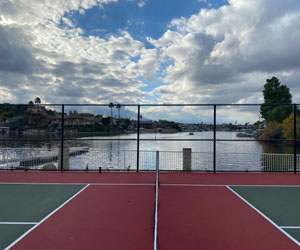 Court Dimensions: A standard pickleball court is 20 feet wide and 44 feet long, with a non-volley zone (the kitchen) extending 7 feet from the net on each side. The kitchen is a no-volley zone, meaning you can't hit the ball out of the air within this area.
Court Dimensions: A standard pickleball court is 20 feet wide and 44 feet long, with a non-volley zone (the kitchen) extending 7 feet from the net on each side. The kitchen is a no-volley zone, meaning you can't hit the ball out of the air within this area.
Scoring: Pickleball is played to 11 points, and you must win by at least two points. In singles, each side gets one serve, while in doubles, both players on the serving team have the opportunity to serve.
The Serve: The serving team starts the game from the right side of the court and must serve underhanded from the baseline. The serve must clear the net and land in the opposing service court, diagonally across from the server. It must also bounce once before being struck by the receiving team. The serving team continues to serve until they commit a fault.
Double Bounce Rule: After the serve, both teams must allow the ball to bounce once before they can engage in a volley (a non-bouncing exchange). This rule ensures that rallies begin with a level of control and reduces the possibility of quick, aggressive plays.
Faults: Common faults in pickleball include stepping into the kitchen while volleying the ball, hitting the ball out of bounds, failing to clear the net, or volleying the ball from the kitchen without letting it bounce. Faults result in the opposing team being awarded a point or the service.
Let Serve: If the serve hits the net and lands in the correct service court, it is called a "let serve" and is retaken without penalty.
Non-Volley Zone Violation: Players are prohibited from volleying the ball from the non-volley zone (the kitchen). Stepping into the kitchen while hitting the ball is a fault.